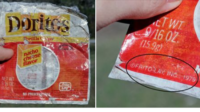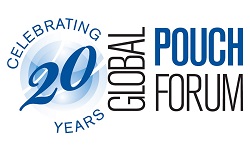Scott Fuller
Intermittent-Motion Product Line Mgr. & Non-Medical Pouch Sales Mgr., NA
CMD Corp.
10 years with the company
(800) 626-0210
www.cmd-corp.com
Danford Anderson
Product Manager
Hudson-Sharp Machine Co.
29 years with the company
(920) 494-4571
www.hudsonsharp.com
Sanjay Amin
General Manager-Sales; Marketing-Customer Support
Mamata Enterprises, Inc.
17 years with the company
(630) 801-2320
www.mamatausa.com
James Russell
President
Modern Manufacturing
8 years with the company
(585) 289-4261
www.modernmfg.net
Raul Matos
Vice President
Karlville Development
20 years with the company
(305) 533-1051
www.karlville.com
Mike Greely
Senior VP and Sales Manager
Totani America
(920) 632-7319
www.totaniamerica.com
Q: What’s new with your company in bag/pouch making?
Fuller: At Pack Expo 2016, we unveiled the 760-IDC shaped pouch die-cutting system, which can be integrated to any brand of pouch-making machine. Essentially, if you can create the seal, you can now cut the shape without the need to purchase a complete die-cut pouch-making machine. The system is designed to integrate seamlessly without bottlenecking the process. The development of the 760-IDC shaped pouch die-cutting system reflects CMD’s focus on building efficiency, as it is so much more important now than it was when the pouch first came onto the scene in the U.S. CMD continues to build on its legacy of improving efficiencies and throughput in all the systems we provide.
Amin: Mamata has introduced two new converting machines for the industry. With changing market needs and restrictions on plastic bag usage for grocery and day-to-day needs, Mamata has introduced a non-woven fabric bag-making machine to the market. Mamata has used all its experience and latest servo technology to design and make this machine the world’s fastest non-woven bag-making machine, capable of running up to 210 cycles per minute. Its practical output is almost three to four times higher compared to any other non-woven bag maker. We also introduced a cutting and sewing machine for laminated PP and HDPE woven sack bag making. Converting woven fabric has always been a bottleneck in the industry. Mamata has introduced the world’s fastest woven sack bag-making machine for cutting and stitching back-seam bags with complete automation. This takes care of large-format packaging needs of pet food, grains, fertilizers, etc. These laminated woven sacks are 100 percent recyclable and add to the sustainability and recyclability.
Russell: Modern Manufacturing is pleased to present its latest offerings for the standup pouch machinery market, offering three different levels of equipment. This line of equipment was conceived to address all levels of pouch-manufacturing needs, from entry level through high volume. The three levels of equipment are targeted for the different market requirements and are also priced accordingly. The Momentum line is designed for small- to medium-volume order quantities. With a reduced footprint, this line is ideal for smaller converting houses and label makers looking to offer standup pouches. The Velocity line is the industry standard and is fitted for medium- to high-volume order sizes. Our Catalyst series is backed by patented technology and addresses high-volume order quantities.
Matos: On the cutting edge and looking toward the future, Karlville promotes an ultrasonic pouch-making solution. Some of the technical benefits include: reliable production process by constant energy input, thus achieving increase of quality and top leak security; sealing with vibration from the inside out instead of the outside in with thermal; it is able to run recyclable film materials more effectively; up to a 70 percent increase in cycles with the lowest rejection rates in the packaging industry; and up to 80 percent lower setup and changing times because the tools aren’t hot. As a plus, there’s no risk of burns during cleaning work.
In terms of the sustainable advantages of film processing using ultrasonic technology, we can mention the following: major material savings, as ultrasonic sealing requires a narrow 3 mm seal versus standard 5-7 mm with thermal sealing alternatives; no PET as a heat shield is necessary, as we seal from the inside out with vibration technology, which is ideal for recycle-ready and biodegradable films; ultrasonic does not require heat to seal, so the process uses a quarter of the conventional electrical energy demand; and there’s no release of pollutants through resulting gases from burning plastics.
Greely: Totani will exhibit two innovative machines at Interpack this month. A quick-changeover high-speed machine, the model BH-60DL54S is equipped with servo auto-positioning of sealers and one-touch seal bar change. This will greatly quicken changeovers. Secondly, we’ll show our new shape pouch machine, BH-60DLLS, with the high-speed Thomson Die Cut System, which also has a quicker changeover to the optional straight cut-off and stacking system to add versatility. Additionally, our spout inserter, Model ST-30, has a newly designed infeed system to more efficiently handle box pouches. At Pack Expo in November 2016, we demonstrated that our PE/PE laminated standup pouches are now made at higher speeds and more consistently with newly developed features. Our large-format box pouch for 20-25 pounds of product can now have a third display panel, utilizing the flat-bottom panel.
Anderson: The 7530 high-speed pouch machine, featuring speeds of 400 cycles per minute in multiple lanes. It’s suitable for large-volume pouch making. Speed is achieved through a patented process that allows long-seal dwell and continuous rotary guillotine.
Q: The bag/pouch is still king in the food and beverage markets, but do you talk to converters about the bag and pouch’s potential in other markets? What other markets are your customers serving, and what markets should we be on the lookout for when it comes to future growth?
Matos: For the home and personal care liquid market, rigid to flexible conversion transformation is within reach. The value proposition is closer than ever with more efficient filling machines. By inserting the spout, and filling and capping all within one machine, the brand owner can save 5-10 cents per pouch by inserting the spout themselves. The larger the spout/pouch, the higher the cost. In addition, the quality for larger pouches is more critical. We are seeing many applications in the quart, half-gallon and gallon configurations. Our partnership with Dow’s PacXpert is within the same strategy to allow the brands to spout. This again will allow better production efficiency and market penetration.
Greely: Food, including human and pet food, and beverage are continuing to grow, so they remain markets to build upon. The lawn and garden market is also strong. Other markets like liquid detergents, shampoo, cleaning agents, cosmetics, toys (kids and pets), motor oil, cigars and fertilizers will see growth. There is a trend toward complete meals and organic foods. Complete meals for those young professional workers that seek organic, which offer a cleaner, more elegant and more sophisticated solution. And they are willing to pay more to get the solution to a faster, yet more nutritious meal. These separately packaged complete meals require high-integrity seals and barrier properties. High-integrity seal pouch machines like the Totani machines can provide the repeatable and consistent high speed with seal reliability.
Russell: We still support the idea of eliminating glass in the consumer kitchen. There are still many areas of packaging that have yet to be penetrated. For example, condiments like ketchup and mustard where a standup pouch with a fitment would be ideal, or peanut butter and jelly, where lighter gauge rigid containers are a step in the right direction. These manufacturers should look to the fitment pouches as an example. These packages not only allow the consumer to extract all of the product, but they also have a lower total carbon footprint compared to traditional packages. Beyond food, we see potential in the adhesives, construction, lubricants and oral care markets.
Amin: The bag/pouch is still a king for the food and beverage industry. However, we have been talking to companies in non-food industry areas, where boxes are currently used and can easily be replaced with pouches, especially our flat-bottom pouches.
Fuller: Brand owners will continue to drive growth in various markets. Converters we speak with stress the need to adapt very quickly to rapidly emerging new product and package requests. They have seen growth opportunities in the household market, as well as lawn and garden, and industrial applications. The pet food market continues to expand as well. Converters and equipment OEMs alike must be ready to respond quickly as newly imagined applications of the pouch emerge. Flexibility and quick changeovers are areas CMD is focusing on in the design of our equipment.
Q: As part of a State of the Industry study Flexible Packaging published in March, bag/pouch machines led all equipment that respondents stated they’re most likely to invest in this year. Simple question: Is there any slowing this market?
Greely: We don´t see any slowing on the growth. On the contrary, new markets and applications are being developed all the time. Even in mature markets, the need for differentiation is more important now than ever. In developing markets like Latin America, we are experiencing big growth in many areas.
Anderson: Perhaps there is. With the continued growth in e-commerce shopping, it is conceivable that shelf space and presentation will lose some importance. Webpage presentation will become increasingly important and possibly make the actual delivery package more of a functional commodity. I don’t see this as a sudden change, but the potential is real if the success of Amazon and others is any indication. Of course, that doesn’t change the need for a bag/pouch, but it does affect the distribution of packaging cost and packaging. If the balance of e-commerce and brick-and-mortar equalizes, then it may make sense to use less expensive packaging to deliver a product that was sold via an engaging webpage.
Fuller: There seems to still be significant upside to the pouch market in the U.S. especially. However, there’s also been a significant amount of capacity added to the supply side in the last couple of years. We’ve all been busy keeping up with that demand. The typical cyclical nature of this explosive growth curve would indicate a slight tapering over the next couple of years, as converters prepare for and respond to the next wave of packaging and technological innovation.
Matos: Pouches are still in growth mode. Retort pouches with clear barrier are in demand as well as recycle-ready pouches, which seem to be an interesting application utilizing ultrasonic sealing. Our focus has been mainly food and beverage, which continues to grow. Recently, we invested in high-pressure processing (HPP) with pouches. Our partner, Green Plant, installed an HPP operation adjacent to Karlville’s headquarters in Miami. This operation uses a hyperbaric HPP machine to process pouches. Jointly, we have been testing pouches for different applications in baby food, juices and institutional foods. HPP is a very high-demanding application for pouches as we process around 80,000 psi. Even though we don’t use temperature, this translates in terms of lamination structures to a retort pouch. This gives us a wide range of understanding of the application within the spouted pouch category.
Russell: In a word, no. The evolution of the packaging market will continue from traditional/rigid containers into flexible pouches and bags. Many of the time-tested packaging methods are being challenged by millennials. Today’s consumer is more aware of the total impact that packaging has on the environment. Recycling isn’t always the best answer when considering the total energy consumed from producing the package through cleaning and reclaim. Now, with the development of more biodegradable film options, pouches are more attractive than ever.
Amin: We foresee lots of companies going into new investments, especially in the U.S. compared to other neighboring countries. We are seeing a growth in this direction this year and foresee new investments taking place in the bag/pouch industry, and we look forward to growing with them.
Q: We hear a lot about Industry 4.0 and how the internet of things will enable the smart factory of tomorrow. How might bag/pouch equipment play a role in this?
Fuller: When you consider how dramatically connectivity has impacted our personal lives and how much more efficient we have become both at home and at work, you can conclude that the Internet of things, as related to manufacturing, is limited only by our imagination. Industry 4.0 is all about connecting and communication. It’s all about breaking down barriers to efficiency and understanding processes through instant access to data. Fortunately, CMD pouch-making equipment is powered by Rexroth, a leader in developing, driving and leveraging Industry 4.0 technology. Our systems are inherently gifted with the capability to connect, helping to bring the smart factory of tomorrow into today for our customers.
Matos: As an HP partner, Karlville works with HP 20000, as well as HP 6800 and 8000 users. After a two-year development, Karlville and HP launched a new technology – Pack Ready for short-run applications – at Interpack and the pouch conference. We see a lot of the mid-web converters looking to enter pouches. This requires processing know-how, and to achieve this, our laminators are tied to the Internet, so converters can download from the cloud operational parameters for new film supply chain.
Greely: New technology and automation is bringing a big change not only in our industry, but also everything is – and will be – affected, and the Internet is a big part of this change. The companies that want to survive and succeed in the future will need to adapt to this technology revolution. In the case of our pouch machines, we already have the necessary tools that use the Internet, like remote troubleshooting, software to monitor production, etc.
Amin: We are seeing customers asking for smart machines today. They want data-logging facility, remote monitoring, troubleshooting and real-time feedback of what is happening on the machine on the production floor to be standard features on the machines. Mamata upgraded its machines in 2016 to be compatible with such features, and we offer our customers more convenience in terms of making their production floor smart in terms of day-to-day operations. With Mamata pouch machines, customers remotely log in, remotely monitor while sitting from an office, and we can troubleshoot the machine from remote places. Our machines give real-time feedback of all the data of the machine.
Russell: Modern’s machines come equipped with a LAN port and are ready to be connected to the network. We see an opportunity to develop software that the user can use to remotely configure machine settings and operational parameters. This software could also be used to communicate with the smart factory, potentially yielding real-time efficiency feedback.
Q: Can you explain the one or two features of your bag/pouch-making equipment that converters like the most?
Amin: There are many features our customers like, but if I have to list the two most-liked features they are our ability to process unsupported co-ex films with the same ease as laminates, and our ability to run a wide variety of pouch styles on a single platform with ease.
Greely: Productivity, efficiency and quality. The era of saving money on an initial investment in less-efficient pouch machines to enter the pouch market is disappearing. More than ever, high productivity with low waste, and making high-quality products is fundamental for the long-term success of any company. Therefore, our three-year warranty is one, and it is unmatched in our industry. Second is our technical support and service.
Russell: Setup and changeover times. We are constantly being told that many converters are measuring this in hours. Modern measures this in minutes. As the total number of SKUs increases and the order sizes become smaller, having a machine that is easy to set up will keep that machine in production longer and increase the bottom line. Independent dwell times are also an often overlooked feature. This allows the operator to control every function of the machine independently. This reduces and can eliminate the need to vary the sealing temperatures between stations. Each function uses only the time it needs, improving seal quality while reducing setup times.
Fuller: It’s our Beyond Intelligent Sealing Technology, which we’ve talked about in previous articles. Our customers are very pleased with the overall process stability they recognize with our equipment. We’ve taken deliberate steps to provide a “set it and forget it” process. When you minimize process variation, you minimize scrap. Our customers are reporting significant scrap reduction and OEE improvements, which they attribute directly to the technology we’re providing. In addition, we’ve taken steps to reduce changeover time on our systems. Once again, these steps have resulted in improved uptime availability and greater open capacity.
Anderson: We get many compliments on how easy our machine is to set up and adjust. Our changeover time is fast and lends itself to multiple changeovers per shift. Short jobs are not a problem for our 750SUP. Also, we are complimented on how easy it is to service our machines. An awareness of the challenges users face in the day-to-day use of our machinery is one of the primary focuses of our engineering team. Setups, routine maintenance and PMs are easier and faster. We listen to customers.
Matos: In terms of thermal pouch making, we fabricate our machines in Japan for high precision and a technology advantage. These pouch machines are designed for quick-change applications, as our main market has been HP customers. Our SUP and multi-format machines are about 4 meters shorter than most available configurations. This is a specific competitive advantage that our new customers are capitalizing on.













